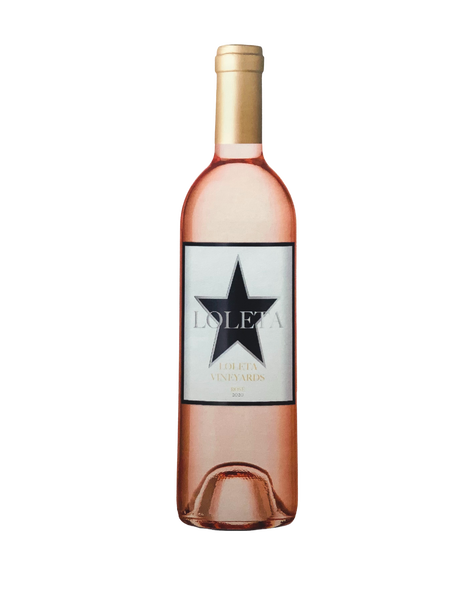
Parce Rum 12-Year Aged
Rum

Parce Rum 12-Year Aged
Rum

Tequila Partida
Tequila

Wyoming Whiskey Double Cask
Whiskey

Flor De Caña
Rum

PATRÓN® Barrel Select Anejo S1B47
Tequila

Telmont Champagne 2017 Réserve De La Terre
Champagne

Cloudy Bay
Portfolio

The Prisoner Wine Co. Sonoma Coast Pinot Noir
Pinot Noir

Susana Balbo
Portfolio

Muga Rioja Torre Muga
Rioja

Celebrity Spirits

Tequila Don Julio 1942 “2025” Illumination Design

Hispanic Heritage Month

Casa Don Ramon

New Releases

PATRÓN® Añejo Single Barrel Gift Set

Krug x Flower Bundle featuring Krug Grand Cuvée 172ème Édition

Gift Cards

Woodford Reserve Double Oaked Bourbon and Compartés Limited Edition Chocolate Collection Bundle

Aviation American Gin with Rolf Aviation Gin Branded Glasses

How Old Forester Ushered in the First Bourbon Boom
Spirits Explained

The Negroni Family Tree
Spirits Explained

Finding Perfectly Tuned Taste with Three Chord Bourbon
Spirits Explained

Elizabeth McCall, Master Distiller at Woodford Reserve
Behind the Brand

Maker's Mark Manhattan
Recipes

This Bundle Contains



Winery Notes
Tasting Notes
Candied summer fruit. - Ranging from vivid pink to deep raspberry, these fruit-driven wines are often typical of rosé made in warmer climates, like Spain and Australia.
Vintage Notes
Vineyard Notes
The Central Coast AVA in California covers the long stretch of coastline from San Francisco Bay south to Santa Barbara, and reaches inland from the Pacific Ocean to the borders of the Central Valley. . The cool climate in much of the Central Coast AVA is excellently suited to the Burgundy varieties of Pinot Noir and Chardonnay, despite the fact that the northernmost part of the region is a full 10 degrees closer to the equator than Burgundy (at latitude 47°N). The hotter, more inland areas of the Central Coast are also good for Zinfandel, which is planted in San Benito County and Paso Robles. Cabernet Sauvignon does well in the higher-altitude parts of the AVA, particularly in the Santa Cruz Mountains north of Monterey Bay.
Winemaking Notes
Rosé Blend is a term identify rosé wines made from unusual or rarely seen varieties or combinations of grape varieties. There is great variation within the world of rosé, from the fresh, strawberry-tinged wines of Provence to the much-maligned category of White Zinfandel. The grape varieties used are most commonly red, and the pale color is achieved by limiting the contact the grape has with its skins. Usually, rosé wines are made from the grape varieties that are common to where they are made – for example, Provence rosé wines are usually made from a combination of Grenache, Syrah and Mourvèdre, while rosé wines from New Zealand are commonly made from Pinot Noir.
| Product Type | Rose Wine |
| Varietal | Rose |
| ABV | 12.9% |
| Country | United States |
Winery Notes
Tasting Notes
Candied summer fruit. - Ranging from vivid pink to deep raspberry, these fruit-driven wines are often typical of rosé made in warmer climates, like Spain and Australia.
Vintage Notes
Vineyard Notes
The Central Coast AVA in California covers the long stretch of coastline from San Francisco Bay south to Santa Barbara, and reaches inland from the Pacific Ocean to the borders of the Central Valley. . The cool climate in much of the Central Coast AVA is excellently suited to the Burgundy varieties of Pinot Noir and Chardonnay, despite the fact that the northernmost part of the region is a full 10 degrees closer to the equator than Burgundy (at latitude 47°N). The hotter, more inland areas of the Central Coast are also good for Zinfandel, which is planted in San Benito County and Paso Robles. Cabernet Sauvignon does well in the higher-altitude parts of the AVA, particularly in the Santa Cruz Mountains north of Monterey Bay.
Winemaking Notes
Rosé Blend is a term identify rosé wines made from unusual or rarely seen varieties or combinations of grape varieties. There is great variation within the world of rosé, from the fresh, strawberry-tinged wines of Provence to the much-maligned category of White Zinfandel. The grape varieties used are most commonly red, and the pale color is achieved by limiting the contact the grape has with its skins. Usually, rosé wines are made from the grape varieties that are common to where they are made – for example, Provence rosé wines are usually made from a combination of Grenache, Syrah and Mourvèdre, while rosé wines from New Zealand are commonly made from Pinot Noir.
| Product Type | Rose Wine |
| Varietal | Rose |
| ABV | 12.9% |
| Country | United States |
WARNING: Drinking distilled spirits, beer, coolers, wine and other alcoholic beverages may increase cancer risk, and, during pregnancy, can cause birth defects. For more information go to: www.P65Warnings.ca.gov/alcohol


Explore our Holiday Gift Guide and unwrap $20 off orders of $100 or more.
Explore our Holiday Gift Guide and unwrap $20 off orders of $100 or more.